Headlines and events archive
Displaying 751 - 800 of 1931
You may also find an archive of news published in the media which are related with the Instituto de Astrofísica de Andalucía - CSIC.
Pages

|
04/10/2018 - 12:30
The European VLBI Network (EVN) and user cases to improve your science The European VLBI Network (EVN) is a network of radio telescopes located primarily in Europe and Asia, with additional antennas in South Africa and Puerto Rico. The combination of such extended network of telescopes provides an extremely high angular resolution (down to milliarcsecond scales). In addition to that, and given its unparalleled sensitivity on this type of observations, the EVN becomes a genuine instrument to observe an enormous... Dr. Benito Marcote |

|
11/05/2017 - 12:30
The Early History of Gamma-ray Bursts The discovery of Gamma-Ray Bursts (GRBs), and the subsequent realization that they are the result of the largest and most distant explosions in the Universe, represents one of the most surprising and fundamental discoveries in astronomy in the past century. Several space-borne and ground-based breakthrough observations in GRBs that led to this realization occurred during the 1990’s. This discovery resulted in the award of the 2011 Shaw Prize... Prof. Gerald J. Fishman |

|
28/04/2017 - 12:30
Gravitational waves: the "other light" from Cosmos First direct detections of gravitational waves were reported in the first half of 2016. These observations represented: i) a confirmation of a fundamental prediction of General Relativity dynamics, and ii) a demonstration of the existence of binaries of stellar-mass black holes capable of merging in a timescale shorter than the Universe's age. This talk will review the basic elements needed to frame the two statements above. The presentation... Prof. J.L. Jaramillo |
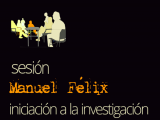
|
19/04/2017 - 12:00
Te espían, te estudian y te controlan: dale importancia a tu privacidad en la red Esta charla va a tratar sobre conocimientos básicos que deberías tener para proteger tu privacidad cuando navegas por Internet. ¿Qué es la privacidad en la red? ¿Por qué debería importarnos? ¿Cuánta información producimos? ¿En qué sentido nos hace vulnerables? "¿Qué más da que me vigilen si no hago nada malo?" ¿De quién debemos defendernos? ¿Qué herramientas tenemos para ello? ¿Quién está de nuestro lado? José Alberto Orejuela García (Universidad de Granada) Salón de Actos del Instituto de Astrofísica de Andalucía (IAA-CSIC) |
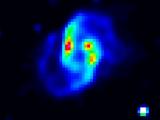
|
11/04/2017
Rewinding stellar evolution: The last 400,000 years of mass loss from a star The study of K4-37, a planetary nebula never studied in detail before, allows us to trace back the mass loss history of its last stages as a star. The study makes use of data from Calar Alto and San Pedro Martir (Mexico) observatories |

|
18/05/2017 - 12:30
Bombs and flares at the Surface and Lower Atmosphere of the Sun A spectacular manifestation of solar activity, is the appearance of transient brightenings in the far wings of the H(alpha) line, originally known as "Hydrogen bombs” but now as "Ellerman bombs" (EBs) after their discoverer. Recent observations obtained by the Interface Region Imaging Spectrograph (IRIS) have revealed another type of plasma ``bombs'' (UV bursts) with high temperatures of perhaps up to 80 000 K within the cooler lower solar... Prof. Viggo Hansteen |
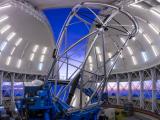
|
05/04/2017
OCTOCAM, a project lead by IAA astronomers, will be the next facility instrument of the Gemini observatory The twin Gemini telescopes, one of the most competitive observatories in the world, consists of two 8.1m telescopes in Hawaii and Chile. OCTOCAM will multiply the power of Gemini South by simultaneously observing in eight different bands |
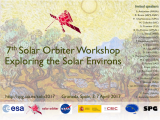
|
03/04/2017 - 07/04/2017
7th Solar Orbiter Workshop Granada |

|
29/06/2017 - 12:30
An overview of the first science from the Sunrise II mission On June, 2013, a second edition of the Sunrise stratospheric, balloon-borne mission took place from Kiruna (Sweden) to Northern Canada. During these five days, the instruments aboard Sunrise were observing the Sun for long periods of stable conditions. New and interesting science has come out from this second flight, which has been published in a special issue of ApJ Supplement. In this talk, I’ll summarize a bunch of these first results to... Dr. Jose Carlos del Toro Iniesta |

|
25/05/2017 - 12:30
The Faint End of the HI Mass Function Low-mass galaxies are the most numerous type of extragalactic system at all epochs of the universe. The population of low-mass galaxies in the local volume allows unique astrophysical and cosmological perspectives that are unavailable in more distant or more massive systems. The ALFALFA blind extragalactic HI survey has cataloged tens of thousands of gas-rich galaxies in the local universe and has populated the faint end of the HI mass... John Cannon |

|
01/06/2017 - 12:30
Servicios Administrativos en el IAA La actividad científica e investigadora en el IAA, requiere el apoyo y soporte de gestión de las unidades de servicios administrativos. Estas se componen de los servicios económico-administrativos y los servicios generales (Biblioteca, Mantenimiento, Ordenanzas). Estas unidades gestionan los medios y recursos materiales, económicos y personales que el IAA tiene asignado. Se expondrá una visión general de los servicios, con la tareas... Fernado Bordons, Gerente del IAA |

|
21/03/2017
Rosetta mission describes surface change of comet in transit around the sun Comparative analysis of comet 67P’s surface before and after the perihelion (point on an orbit closest to the sun) reveals numerous changes in its orography, though not on a major scale. Paper published in Science magazine suggests important orographic features of comet 67P date back to previous, more active periods in its history |

|
08/06/2017 - 12:30
The Dynamic Universe: Adventures in Time Series Analysis Modern astrophysics has revealed a Universe alive with explosions great and small. It is an astonishingly active place, far different from the serene “clockwork Universe” previously envisioned. Our tour of this dynamic Universe includes the active Sun, extrasolar planets and the search for intelligent life on them, the highly active relativistic plasma that is the residue of a stellar explosion in the year 1054 AD, dramatic x-ray... Dr. Jeff Scargle |

|
09/05/2017 - 12:30
Blender 3D, el programa definitivo Blender es un potente programa multiplataforma que se distribuye libremente y es de código abierto. Entre sus aplicaciones más inmediatas está el modelado y la animación 3D, pero es un programa muy versátil que se puede usar para muchos otros propósitos. En esta charla presentaremos ejemplos de uso de Blender para la visualización de datos científicos y divulgación de la Ciencia; para la creación de diseños y piezas tridimensionales que pueden... Dr. Francisco M. Gómez Campos |

|
20/04/2017 - 12:30
Spatially resolved star formation history of CALIFA galaxies: Implications for galaxy formation One year after the final data release of the CALIFA survey, I will revise the results obtained from the analysis of the spatially resolved stellar population properties of galaxies and their impact on our knowledge on galaxy formation and their evolution. I will do special emphasis in the more recent results on the spatially resolved star formation histories of galaxies obtained for our group at the IAA. I will show, in my opinion, the... Prof. Rosa González Delgado |

|
06/04/2017 - 12:30
Fractal analysis in pulsating stars: what is and what we can learn from it I will describe the basic ideas of my line of research, concerning the develop of classification criteria and algorithms for the identification of delta Scuti, gamma Doradus and Solar-like pulsating stars, based on chaos analysis and multi-fractal analysis. In fact multi-fractal behaviour in light curves, which emerges at the onset of chaos, could be the fingerprint of the stochastic mechanism of modes excitation, due to an outer convective... Dr. Sebastiano de Franciscis |
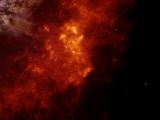
|
14/03/2017
SN2015bh: the end of a star or an "impostor" supernova? Astronomers spot an intense explosion of a massive star, which, according to records, experienced frequent eruptions for at least 20 years. The analysis of the outburst does not allow to discern between a real supernova - an explosive event marks the end of a star - or a giant eruption implying a massive change in the star’s evolutionary course |

|
27/04/2017 - 12:30
The large abundance discrepancy phenomenon in planetary nebulae The discrepancy between chemical abundances computed using optical recombination lines (ORLs) and collisionally excited lines (CELs) is a major unresolved problem in nebular astrophysics, with significant implications for the determination of chemical abundances throughout the Universe. In planetary nebulae (PNe), a common explanation of this discrepancy is that two different gas phases coexist: a hot component with standard metallicity, and a... Dr. Jorge García Rojas |
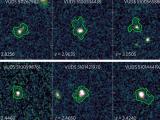
|
07/03/2017
Astronomers unveil with outstanding detail the first steps of nascent galaxies in the primeval universe An international team of astronomers have pushed large telescopes to their current limits to discover a population of tiny newborn galaxies, which shed new light into the first stages of galaxy formation. Although rare, these nascent objects reveal with unprecedented detail the extreme physical conditions that have existed in the first galaxies formed right after the Big Bang |

|
23/03/2017 - 12:30
Detection of gravitational waves from space: the LISA mission The idea of detecting gravitational waves from space has been under consideration for more than 25 years. In 2012, the advisory bodies of ESA decided that the next-but-one "large mission", L3, will be devoted to this. Launch is scheduled for 2034. In 2015, the Director of Science of ESA appointed an external committee, with Michael Perryman as chair, to advise on the technical feasibility of the LISA mission, and the technology development... Prof. M. Perryman |

|
16/03/2017 - 12:30
Space astrometry: the Hipparcos and Gaia missions The talk will provide a short historical context and describe the scientific motivation for these missions, outline the essential experimental principles which underpin their measurements, and give an overview of the science objectives, including Gaia's expected yield of many thousands of astrometrically-detected exoplanets. Prof. M. Perryman |
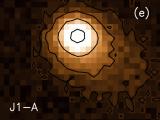
|
28/02/2017
P/2016 J1: an asteroid that split in two and whose fragments, years later, developed tails Asteroids, unlike comets, do not usually present tails, but there are some twenty exceptions to this rule. P/2016 J1 is a peculiar case, known as an “asteroid pair”, resulting from the fracture of a parent asteroid |

|
30/03/2017 - 12:30
Star formation in nearby early-type galaxies It is well known that there is little star formation activity in early-type galaxies. By cross-matching SDSS DR 7 with RC3 catalog and visually checking the SDSS images, we derive a sample of 583 S0 galaxies with the central spectrophotometric information. In order to separate nebular emission lines from the underlying stellar contribution, we fit the stellar population model to the SDSS spectra of these S0 galaxies. According to the BPT diagram... Dr. Qiusheng Gu |

|
02/03/2017 - 12:00
Supermassive Black Holes: Impact on Galaxy Formation and Evolution Supermassive black holes, weighing between millions to billions times the mass of the Sun, are believed to power quasars and other energetic activity in the centers of galaxies. With the help of advanced telescopes from the ground and in space, operating across the electromagnetic spectrum, astronomers have now discovered that supermassive black holes not only exist, but that they are very common and play a critical role in the formation and... Prof. Luis Ho |
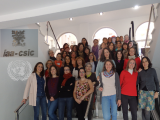
|
09/02/2017
11 February. International day of women and girls in science The United Nations General Assembly adopted a resolution declaring 11 February as the International Day of Women and Girls in Science. |

|
09/03/2017 - 12:30
Recovering information beyond the power spectrum of large-scale structure Future galaxy surveys of the large-scale structure in the Universe will provide a wealth of new data and make it possible to use higher-order statistics beyond the power spectrum, such as the bispectrum (or 3-point correlation function), to constrain galaxy clustering, the standard LCDM cosmology, and many of its possible extensions. However, it may be possible and preferable to use recently devised alternative statistics, such as the line... Dr. Joyce Byun |

|
23/02/2017 - 12:30
The impact of environment and confusion of the observed HI galaxy population The HI galaxy mass function represents a fundamental component of our understanding of the gas content of galaxies. How its form varies throughout the local Universe and as a function of redshift is key to developing a complete picture of galaxy evolution. We use the ALFALFA 70% catalogue, the largest uniform catalogue of extragalactic HI sources to date, to explore the environmental dependence of the HI mass function based on the projected... Michael Jones |
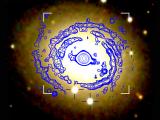
|
19/01/2017
Stellar formation is observed in a type of galaxy where, in theory, stars are no longer born CALIFA project allowed to detect, in three early-type galaxies, a very tenuous arms where stars are being formed. The data, obtained with Calar Alto Observatory 3.5m telescope, contradict the widespread belief that in old galaxies stars are no longer born |
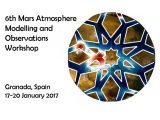
|
17/01/2017 - 20/01/2017
Mars Atmosphere Modelling and Observation Granada |

|
12/01/2017 - 12:00
Calar Alto, presente y futuro Esta charla pretende dar una visión general del estado actual del observatorio de Calar Alto mostrando los principales hitos conseguidos en los últimos años. La re-apertura de instalaciones, la concesión de nuevas ayudas del MINECO para mejoras de infraestructuras y la celebración del workshop de instrumentación en Granada, ha abierto un nuevo escenario que el observatorio va a afrontar en los próximos años. Dr. Jesús Aceituno, director de CAHA |

|
09/02/2017 - 12:30
Molecular gas and dust in low-metallicity starbursts Metal-poor, star-forming, dwarf galaxies play a fundamental role in galaxy formation and evolution, and according to LambdaCDM models may be the building blocks of most of the galaxies in the universe today. Although the interstellar medium (ISM) in such galaxies was thought to be virtually dust-free, over the last decade, observations have shown that dust can be an important constituent of even a low-metallicity ISM. However, the molecular... Dr. Leslie Hunt |

|
29/12/2017
The Institute of Astrophysics of Andalusia launches the app "Let´s go to Mars!" "Let's go to Mars" is a scientific graphic adventure in which you must land-off in Mars, explore the surface of the planet, build a permanent base for the arrival of your colleagues, collect and analyze Martian samples, and face the many dangers that exist in the red planet |

|
16/02/2017 - 12:30
Cold plasma and magnetic reconnection at the magnetopause boundary layer Magnetic reconnection is a fundamental plasma process that permits the exchange of energy and mass between colliding plasmas, e.g., between the Solar Wind and the Earth's magnetosphere. Several studies have reported the presence of cold plasma of ionospheric origin at the magnetospheric side of the magnetopause boundary layer. As a result, the particle distribution functions involved in reconnection are far from equilibrium, exhibiting a cold... Dr. Sergio Toledo Redondo |

|
02/02/2017 - 12:00
Living on the Edge: Superthin Galaxies and the Cosmic UV Background Superthin galaxies are bulgeless, late-type spiral galaxies seen edge-on. HI synthesis observations probe the kinematic structure of their interstellar medium. Observations of these isolated, quiescent galaxies have reached column densities as low as few x 1018 atoms . cm-2 . The simple structure of the superthins makes them ideal cosmological laboratories (Uson and Matthews, Astron. J. 125, 2455, 2003). I shall present the results of high-... Prof. Juan Usón |
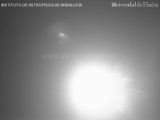
|
12/12/2016
Fireball on Granada on December 11, 2016 At 22:25 in the evening (local time) of December 11 a brilliant fireball crossed the south of Spain and was recorded from the Sierra Nevada Observatory (Granada). |
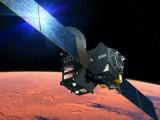
|
30/11/2016
First data confirm that NOMAD will be able to put an end to the methane mystery on Mars NOMAD´s data confirm the perfect functioning of the instrument, co-developed by the Institute of Astrophysics of Andalusia (IAA-CSIC) |
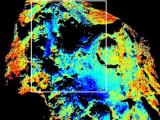
|
18/11/2016
Brightness variations on the surface of '67P / Churyumov' show the complexity of cometary activity Brightness variations on the surface of '67P / Churyumov' show the complexity of cometary activity |

|
31/01/2017 - 12:30
Asteroid surfaces: irradiation and VIS-IR micro-spectroscopy in the laboratory Primitive extraterrestrial materials, such as meteorites and dust collected by sample return missions, are characterized by a large compositional heterogeneity at different scales. This heterogeneity has been observed in the laboratory by different techniques. Among these, micro-IR spectroscopy has the advantage of being totally non-destructive and allowing direct comparison with astronomical observations. With the development of Focal Plan... Dr. Rosario Brunetto |

|
26/01/2017 - 12:30
Novae as Lithium factories in the Milky Way The abundance of Lithium observed in very young stellar populations is ~4 times larger than the primordial one estimated by recent Planck measurements. Since Lithium is easily destroyed in stellar interiors, the search for astrophysical sources responsible for of the observed Lithium over-abundance was a mystery for decades. In this seminar I'll discuss the recent detection of Lithium in the spectra of two slow novae, V1369 Cen and V5668 Sgr,... Dr. Luca Izzo |

|
19/01/2017 - 12:30
Witnessing the birth of a planetary nebula Planetary nebulae are one of the last stages of evolution of stars like our Sun. The beginning of photoionization, giving rise to a new planetary nebula, will certainly produce dramatic changes in the object, but this instant is difficult to observe, since it will only take a few decades. During of a long-time study of water masers in post-AGB stars and planetary nebulae, we identified an object (IRAS 15103-5754) in which we believe... Dr. Jose Francisco Gómez |

|
01/12/2016 - 12:30
History of solar activity recorded in polar ice Un equipo de investigación internacional en el que participa el conferenciante ha reconstruido la actividad magnética solar de los últimos diez mil años analizando para ello la concentración de isótopos cosmogénicos. Dr. Antonio Ferriz |

|
02/12/2016 - 12:30
Multiwavelength analysis of PBC J2333.9-2343 Nuclear activity as is observed in active galactic nuclei (AGN) might be a phase occurring in all galaxies, and this activity could be recurrent. A perfect laboratory to test these scenarios are the giant radio galaxies, since their emission can be as old as 10⁷-10⁸ years. In the present work we focus on the nucleus of PBC J2333.9-2343, which called our attention because it is a giant radio galaxy that shows different and incompatible... Dr. Lorena Hernández García |

|
24/11/2016 - 12:30
Big Data at the IAA: main ideas and how to run a real application at the IAA computation cluster A brief description of the Big Data paradigm is presented minimizing the technical details, reviewing previous work at IAA and showing a practical case demonstration. Dr. Rafael Morales |
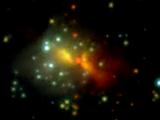
|
14/11/2016
A startburst reveals the formation mechanism of massive stars A startburst reveals the formation mechanism of massive stars |

|
17/11/2016 - 12:30
The CaII triplet in Quasars: from the accretion disk to the star formation Active galactic nuclei (AGN) show a great diversity of optical and UV emission line properties. Dynamical and physical models should be built accordingly. The presence of strong FeII emission suggested the existence of a region shielded from high energy photons, where the low ionization lines are emitted. Mary Loli Martínez Aldama |

|
10/11/2016 - 12:30
Very High Energy gamma rays from AGNs: key for AGN structure and cosmological studies The key for AGN structure and cosmological studies. Dr. Josefa Becerra |
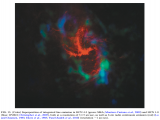
|
09/11/2016 - 12:00
Star Formation Close to and Accretion onto the Supermassive Black Hole Sgr A* The environment of Sgr A* provides a window to the close-up study of star formation under extreme physical conditions Prof. Farhad Yusef-Zadeh |
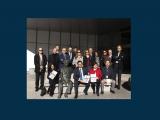
|
08/11/2016
The Institute of Astrophysics of Andalusia participates in the candidacy of Granada as "City of Science" The Institute of Astrophysics of Andalusia participates in the candidacy of Granada as "City of Science" |

|
02/11/2016
Study confirms that novae, a type of explosive phenomenon in stars, are main source of lithium in the universe Large amounts of beryllium-7, an element that decays into lithium, have been found inside nova Sagittarii 2015 N.2 |

|
03/11/2016 - 12:30
A search for neutral gas outflows in nearby (U)LIRGs I will present a search for outflows in a sample of 38 local (U)LIRG systems (51 individual galaxies) observed with VIMOS/VLT and SINFONI/VLT integral field units. Dr. Sara Cazzoli |